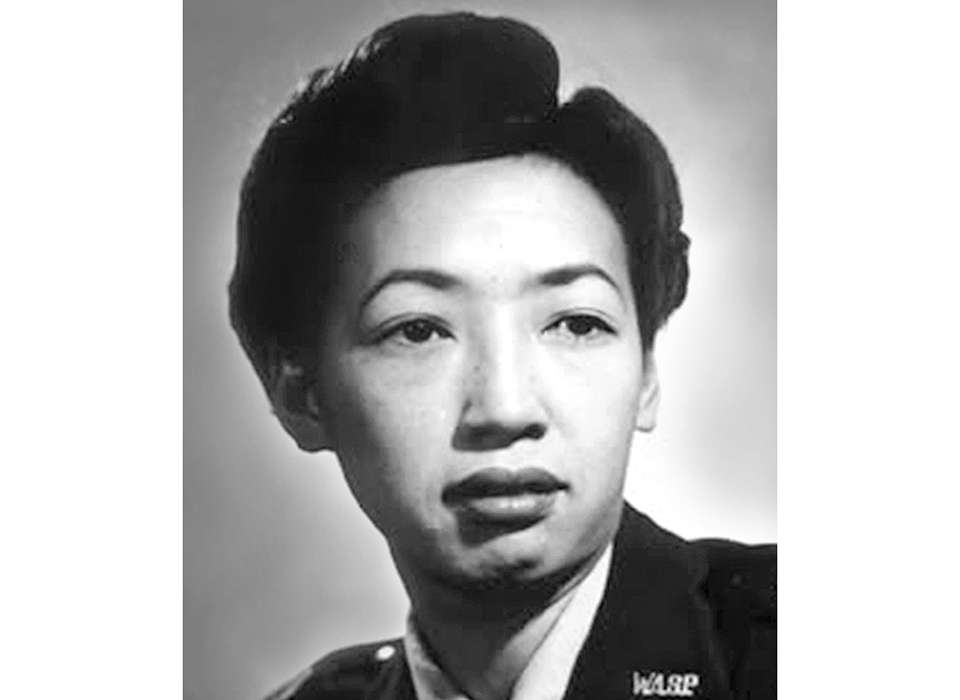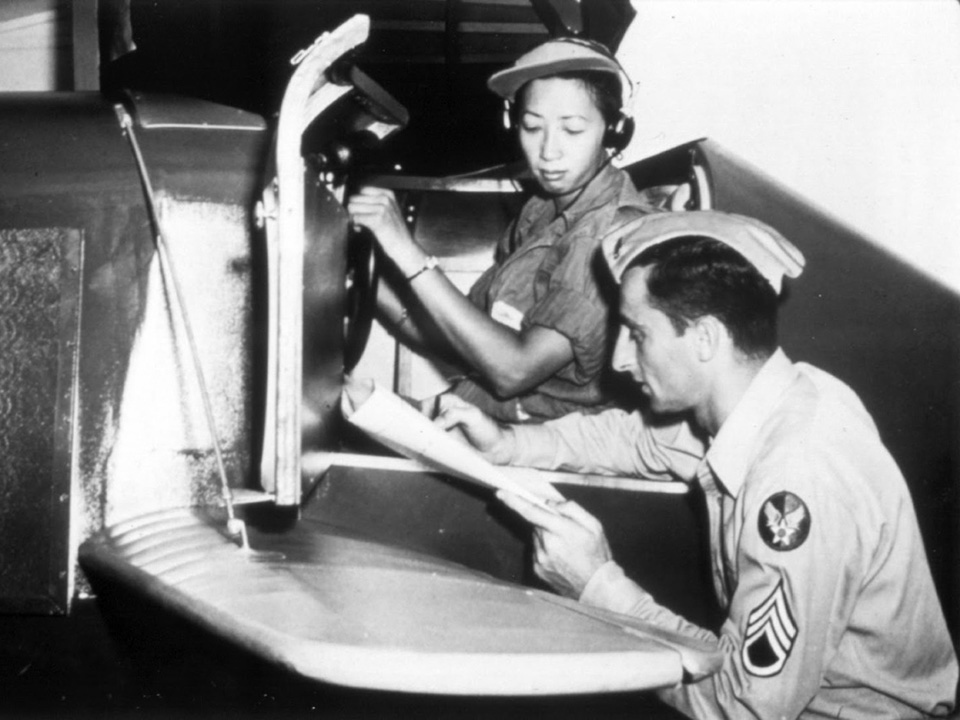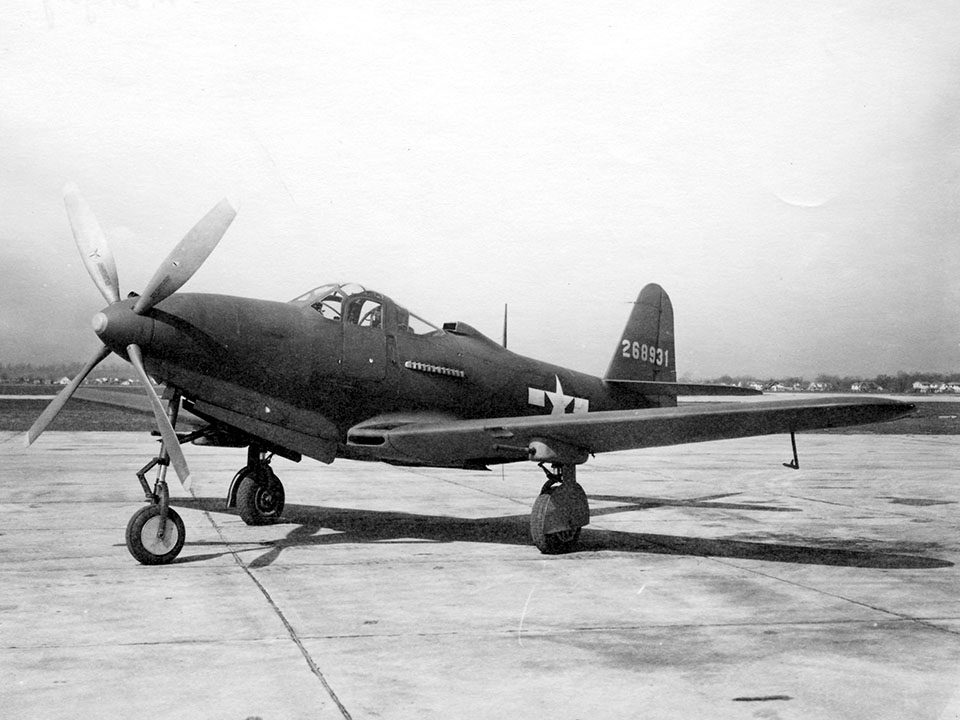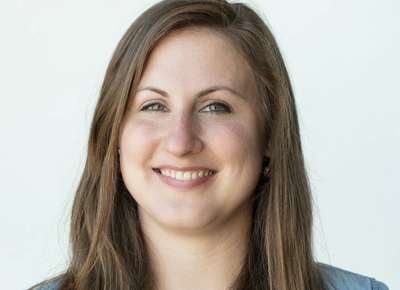Top Image: Hazel Ah Ying Lee, wearing her WASP uniform. US Air Force photograph.
In the early 1900s, life in the United States, especially on the West Coast, was not easy for Chinese Americans like the Lee family in Portland, Oregon. An increase in Chinese immigration in the 1800s led to legislation which limited immigration and naturalization, and although anti-Chinese sentiment began to wane as World War II began, Chinese Americans still experienced racism. Hazel Ah Ying Lee, one of eight children in the Lee family, was born in 1912 to parents who had immigrated from China.
Described as vibrant and funny, Lee was also athletic and adventuresome. She played several sports and even learned to drive. After graduating high school Lee took a job as an elevator operator at a department store in Portland. For Lee, the job was a stepping stone to a passion she had recently developed—flying. After visiting an airstrip with some friends and taking a short flight, like many in the 1930s, Lee was instantly hooked on flying and began saving money for lessons. Lee began flying lessons and enrolled in a flying program supported by the Portland Chinese Benevolent Society. In October 1932, she earned her pilot’s license, becoming one of the first Chinese American women to do so.
In 1931, Japanese forces invaded Manchuria, and began military operations which expanded throughout China and continued throughout World War II. The Chinese military needed pilots, and many Chinese Americans and Chinese citizens in the United States went to China to fly. Lee joined a squadron of volunteers training in Portland, where she met Clifford Yin Cheung Louie. The two went to China where Hazel was only allowed to fly commercial aircraft, and Louie joined the Chinese air force. Eventually relegated to a desk job because of her gender, Lee was in Guangzhou when Japanese forces bombed the city in 1937. Along with her mother and sister, Lee left for Hong Kong, where they were war refugees. The next year Lee returned to the United States, finding work with an organization in New York which was sending armament to China.
In September 1942, what eventually became known as the WASP began training women to fly military aircraft. The flying opportunities for women who became WASP were exactly what women like Lee were looking for. In 1942, Lee applied for the program and was accepted into the training class 43-W-4, making her the first of two Chinese American women accepted into the WASP. Already in her early thirties, Lee was older than many of her fellow pilots (WASP accepted women as young as 18). Emerging as a leader in her training class, Lee was well-liked by the other pilots, who recalled her as a fast talking, hilarious woman. Lee taught them about Chinese culture, often taking other pilots to Chinese restaurants where she ordered in Chinese and taught the other women about the food. As a nod to her classmates, Lee was known to write their names or nicknames in Chinese characters with lipstick on the tail of planes she flew.
By the time Lee’s training class began, WASP were being trained at Avenger Field in Sweetwater, Texas. A major challenge for Chinese Americans during World War II was being mistaken as Japanese. Although the US government tried to educate people on the differences in physical appearances between Japanese and Chinese individuals, it was often difficult for many to do so. During one training flight, Lee was forced to land in a field. The farmer, armed with a pitchfork, ran out to the plane to investigate. Finding Lee, he became convinced she was a Japanese pilot sent to invade the United States. Lee had quite a time convincing the farmer that she was not only Chinese, but an American, and yes—a female pilot. She succeeded and was able to phone for assistance to have her aircraft repaired so she could take off. That night, she was said to have had the whole chow line in tears as she recalled the experience. Although Lee was able to laugh about what had happened, the experience was one that could have ended very differently.
During training at Sweetwater, Lee married Clifford Yin Cheung Louie, who had become a major in the Chinese air force and was in the United States recovering from an injury. The two had known each other for nearly a decade and had been engaged for several years. After graduating from training, Lee was stationed at Romulus Army Air Base in Michigan, with the Air Transport Command’s 3rd Ferrying Squadron. From there, Lee flew ferrying missions and administrative flights in several aircraft types, including large C-47 transport aircraft.
A talented pilot who was willing to fly any plane, Lee was sent to Pursuit School in Brownsville, Texas in September 1944. There, she was one of just over 130 WASP who trained to fly fighters like the P-51 Mustang and P-63 Kingcobra. The next month, word came down that the WASP were to be disbanded, effective December 20. According to Lee’s sister, with the end of the WASP drawing near, Lee began to look for other flying opportunities, and had inquired about flying in the China-Burma-India theater. Like many of the WASP pilots, by November 1944, Lee was exhausted from the long hours and grueling flights and frustrated by the shutdown of the organization. Lee had also not heard from her husband in over six months since he had resumed flying in China.
In November 1944, Lee was given orders to pick up a P-63 Kingcobra from the Bell Aircraft factory in Niagara Falls, New York, and fly it to Great Falls, Montana. Great Falls was a major staging area for aircraft being sent to the Soviet Union, and after weather delays, Lee was finally making an approach to land on November 23 when things went terribly wrong. Another group of P-63s was incoming, being flown by WASP and male US Army Air Forces pilots. One of those pilots, Jeff Russell, had been without a working radio for several days. Coordinating with the pilots he was flying with, Russell had to rely on one of the other pilots informing the control tower he was without radio. With numerous aircraft of the same type circling the field waiting to land, the personnel in the control tower lost track of which aircraft was without a radio.
As Lee began a long, slow approach to the runway, Russell was above her, also attempting to land. Someone in the control tower noticed the two aircraft too close and yelled, “pull up!” not remembering which pilot did not have a radio. Lee heard the order, Russell did not. She pulled her aircraft up, and with no time to react and correct, hit Russell’s plane. Both aircraft crashed at the end of the runway, bursting into flames. Pilots on the ground ran over to the wreck, pulling Russell out. Lee’s aircraft was on fire and she was trapped, burning badly. Ground crew were able to pull her from the aircraft, but her burns were too severe. Hazel Ah Ying Lee died November 25, 1944, the 38th and final WASP to die in the line of duty. She was 32 years old.
Three days after news of Lee’s death reached her family in Portland, the Lee family received word that her brother Victor, who was with the US Army in France, had been killed in action. The family prepared to bury two of their children in a cemetery in Portland. As WASP were civilian pilots, the Lee family had to bear the burden of all transportation and funeral expenses for Hazel. Adding to the family’s anguish, the cemetery staff informed them that Hazel and Victor could not be buried in the “white” section of the cemetery. War hero status meant nothing in the face of anti-Chinese sentiment. The Lee family fought back, and were able to bury the siblings side by side in River View Cemetery.
Kali Martin
Kali Martin is a former Research Historian of The National WWII Museum's Jenny Craig Institute for the Study of War and Democracy.
Cite this article:
MLA Citation:
APA Citation:
Chicago Style Citation:







![Max Fuchs, New York City cantor, sings as Rabbi Sydney [sic] Lefkowitz, Richmond, VA, conducts the first Jewish services from Germany.](/sites/default/files/styles/max_650x650/public/2025-10/image1.jpg)



